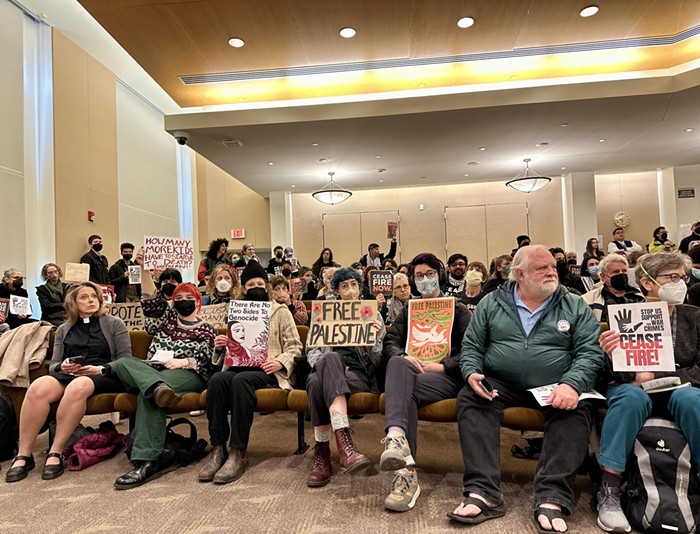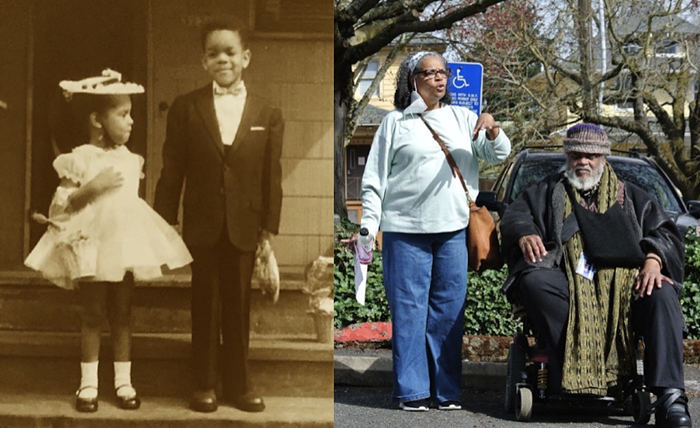
In the spring, Oregon House Speaker Tina Kotek, a Democrat, and House Republican leadership cut a deal: Republicans would stop using stall tactics to block Kotek’s legislative agenda if Kotek agreed to evenly split the House committee in charge of redistricting between Democrats and Republicans.
Democrats benefitted handsomely from the deal—using supermajorities in the House and Senate to pass progressive legislation that had been stopped in preceding sessions by Republican walkouts.
When U.S. Census data was released in August, triggering the start of the once-every-ten-years redistricting process to redraw Oregon’s state legislative and congressional districts, Republicans were set to have a say in the process as the state added a new, sixth congressional district.
But while the process for drawing new state legislative maps has gone smoothly, the process for drawing new congressional maps has not. With Democrats and Republicans unable to agree on a map and a September 27 deadline to submit maps to the governor fast approaching, the spring deal fell apart.
Earlier this week, Kotek split the redistricting committee into two separate committees, one to handle state legislative redistricting with an even number of Democrats and Republicans, and an entirely separate committee, controlled by Democrats, to handle congressional redistricting. Those committees both passed maps endorsed by Democrats.
Republicans in the legislature have responded with fury.
House Minority Leader Christine Drazan said in a statement that Kotek “lied” and “sold the soul of our state.” Drazen’s office did not respond to the Mercury’s request for additional comment on this story.
But multiple House Democratic aides said that Kotek, who earlier this month launched her campaign for governor, had no other choice to keep the process from stalling at the House level.
“House Republicans were asked to come to the table to find agreement on an introductory set of draft maps once we received the Census 2020 data,” wrote Danny Moran, Kotek’s communications director, in an email to the Mercury. “They declined. Their continued refusal to compromise and engage in honest collaboration throughout this process gave the Speaker little choice to ensure the Legislature could do its job.”
Jim Moore, professor of political science at Pacific University agreed—saying that while he was “surprised” by Kotek’s decision, it was clear that the committee was not going to produce a workable map, thanks to the conduct of House Republicans.
"[Republicans'] continued refusal to compromise and engage in honest collaboration throughout this process gave the Speaker little choice to ensure the Legislature could do its job.”
“The Tina Kotek argument about dissolving the committee makes more sense,” Moore said. “The Republican defense makes very little sense—simply because they were given a tremendous opportunity and decided not to take it.”
Moore is referring to a lack of Republican cooperation prior to the release of draft maps by the House and Senate redistricting committees in early September.
According to Rep. Andrea Salinas, the Democratic co-chair of the House redistricting committee, Republican leadership on the House committee declined to meet with Democrats prior to the release of draft maps.
“[I’m] not saying that anybody was going to come to this big kumbaya, but [we] would [have] draft maps knowing that there would be some areas where we’d all agree, some where we don’t, that kind of thing,” Salinas said. “Well, once the census data came out and I asked my co-chair, ‘Hey, do you want to draw maps?’ It was crickets.”
Salinas’ Republican co-chair, Rep. Shelly Boshart Davis, did not respond to a request for comment on this story.
That decision left the Democrats and Republicans in the House to draw their own congressional maps, which led to predictable results: the Democratic map was drawn to heavily favor Democrats, while the Republican map was drawn to heavily favor Republicans.
The Democratic map, which was also passed along party lines in the Senate, would likely give the Democrats a 5-1 advantage in representation in the U.S. House of Representatives—under-representing Republican voters, who make up roughly four-tenths of the state’s electorate.
The map offered by House Republicans was also biased. It would have created two safe Democratic seats in Multnomah and Washington counties, one safe Republican seat in Eastern Oregon, and three competitive seats—two of which, according to analysis by FiveThirtyEight, would lean towards Republican candidates.
House Democrats also accused Republicans of racially gerrymandering their maps by splitting communities of color in Salem and Woodburn to weaken their influence, and pointed to ties between the Republican redistricting advocacy group FairMaps and a group that pushed walkouts over climate legislation in previous years as evidence of the party’s obstructionist position.
According to Moore, the Republican map squandered a chance to paint the Democratic proposal as overly partisan.
“Republicans clearly did not take advantage of having an equal committee to present a more neutral map that the committee could consider,” Moore said. “They went to the extreme so that Republicans would be overrepresented in the state legislature and congressional delegation, way beyond their numbers.”
After the draft maps were released, Salinas said that Republican leadership wanted to use their map as the basis for negotiations—despite the map’s heavy partisan lean toward Republicans and the fact that they had no way to pass it along party lines.
“They kept coming with their maps and wanting us to start with that,” Salinas said. “I just kept saying, ‘That's not how this works. What are you doing?’”
Andrew Rogers, a spokesperson for the progressive organization Our Oregon, wrote in an email to the Mercury that “Republicans should have known better” than to think that they could take a hard line stance on negotiation and retain veto power over any Democratic map proposal.
Salinas said that she expects the Democratic map to be challenged in court, as congressional maps in states adding new districts often are, but that she expects it to hold up to legal scrutiny.
It might not get that far to begin with. Republicans left the House chamber on Tuesday afternoon after a positive COVID-19 test at the capitol suspended legislative business until Saturday, and have suggested that they might not return.
"Republicans clearly did not take advantage of having an equal committee to present a more neutral map that the committee could consider."
If the Republicans do not return to the chamber and deny the Democrats the quorum needed to pass maps through the full legislature, Democratic Secretary of State Shemia Fagan would be tasked with drawing the state legislative maps, while a five-judge panel would draw the Congressional maps.
While it is possible that a judge-drawn congressional map may be more favorable to Republicans than the Democratic proposal, that is not guaranteed. Any map drawn by Fagan is not likely to advantage Republicans either, especially considering that both sides have endorsed the existing legislative map proposal.
Moore said that it is unclear what, if anything, Republicans gained over the last year. Democrats passed a slew of major bills, and Republicans appear to be on the verge of doing exactly what they might have done if the House redistricting committee had never been split evenly: walking out to deny Democrats the quorum they would need to pass new maps along party lines.
“You have something you didn’t have before, you have parity in a crucial committee, and you waste it,” Moore said of House Republicans. “That to me speaks of a caucus that is really split, it speaks of leadership that is not very good at leading, and it speaks of wasted opportunities.”



















